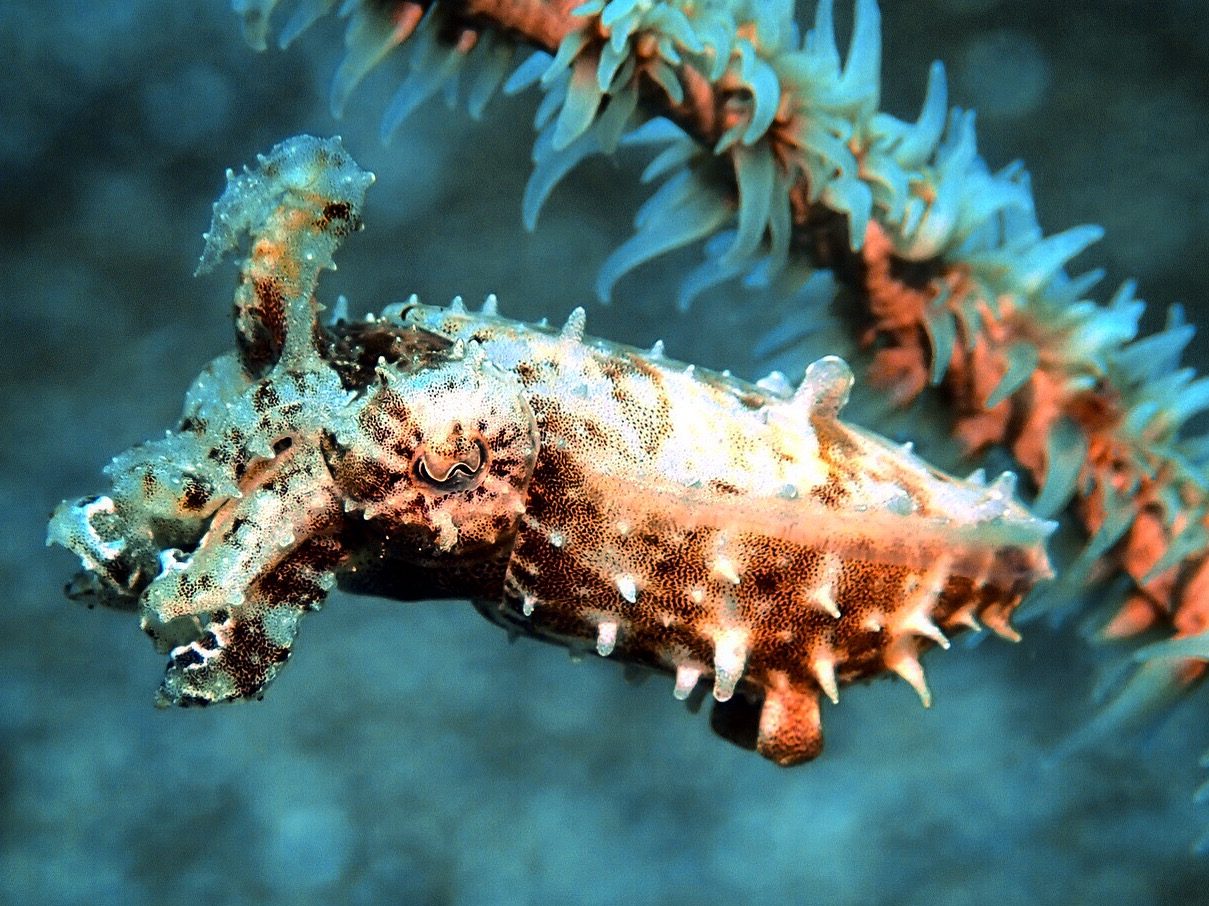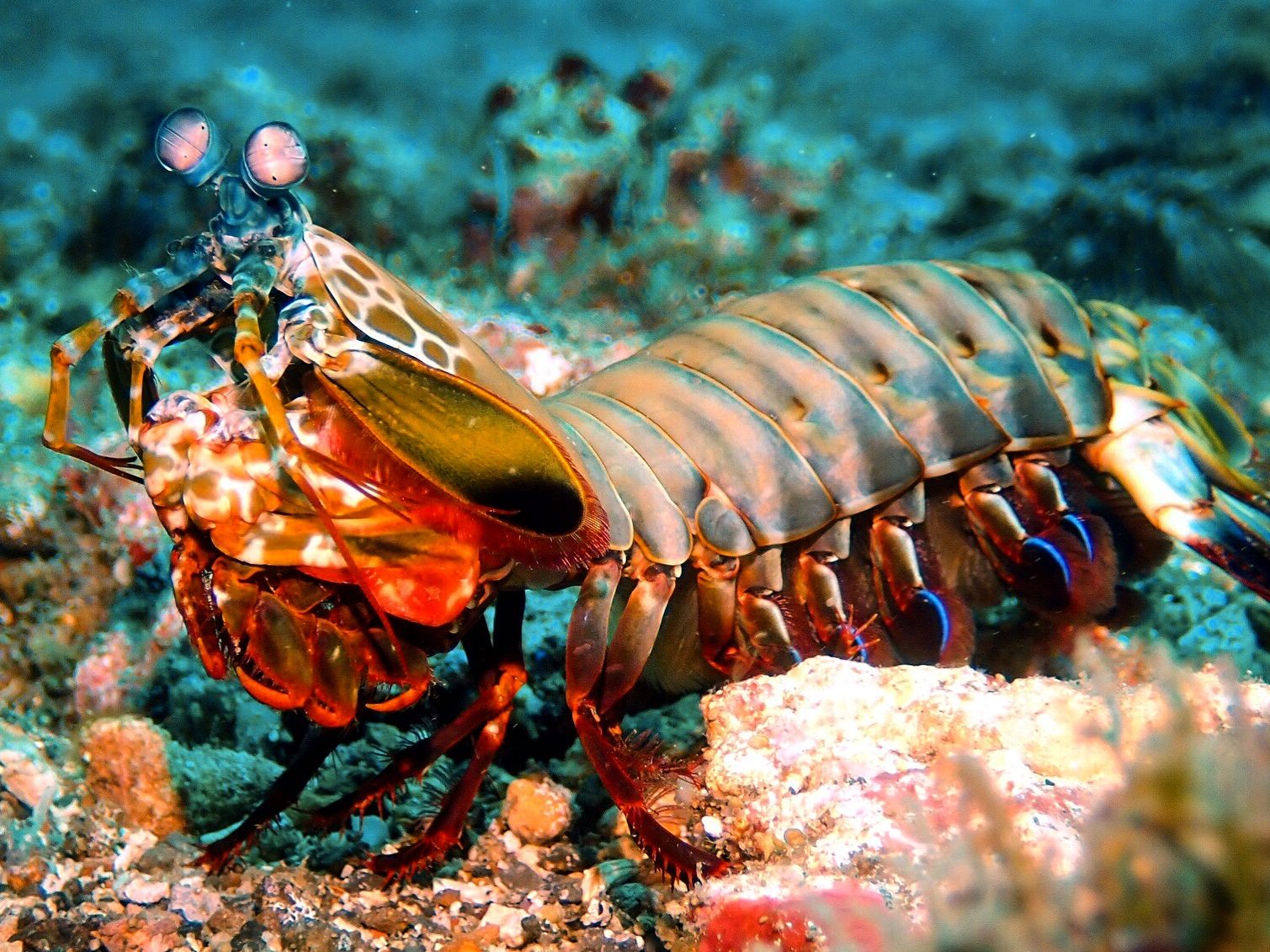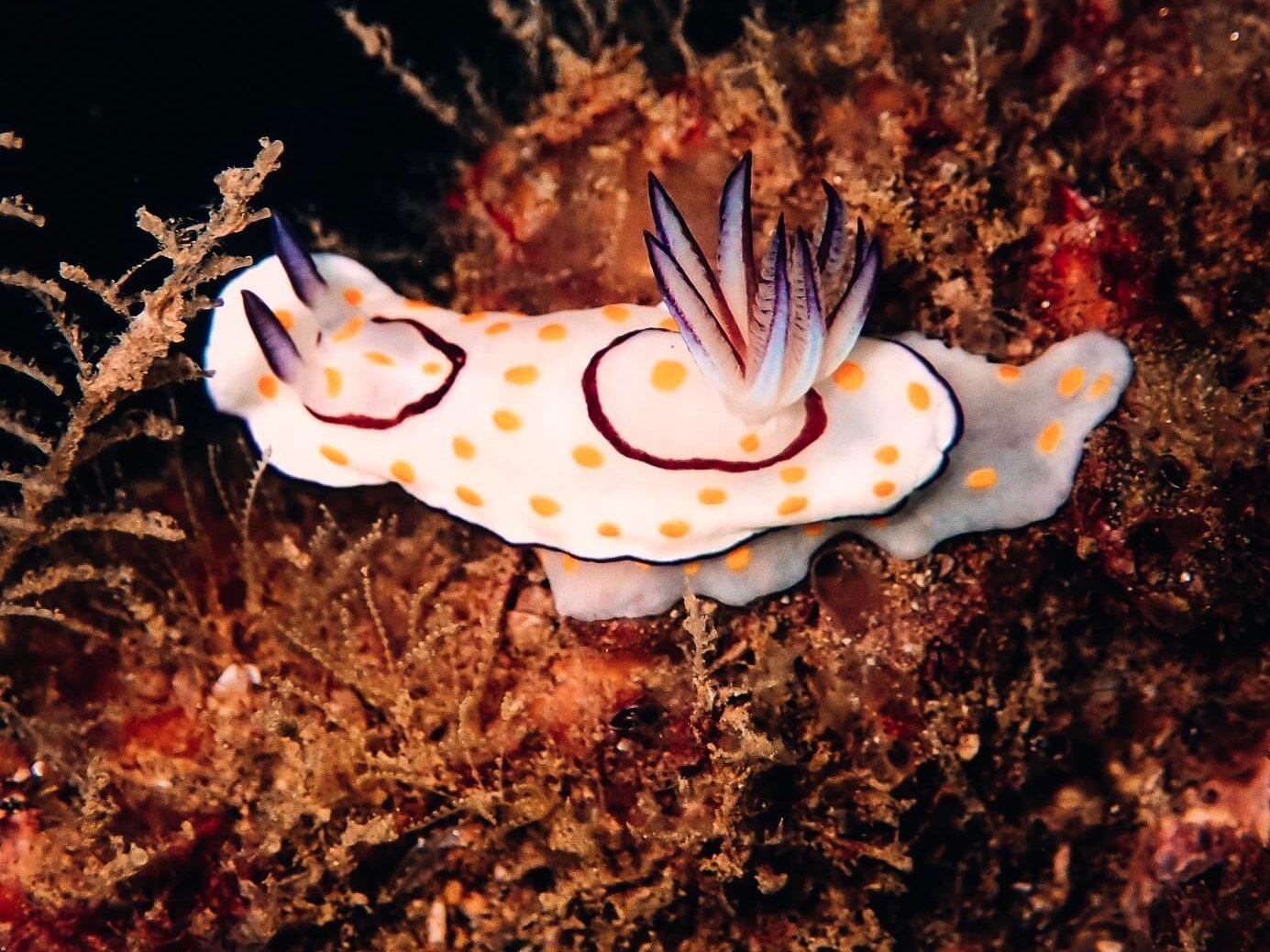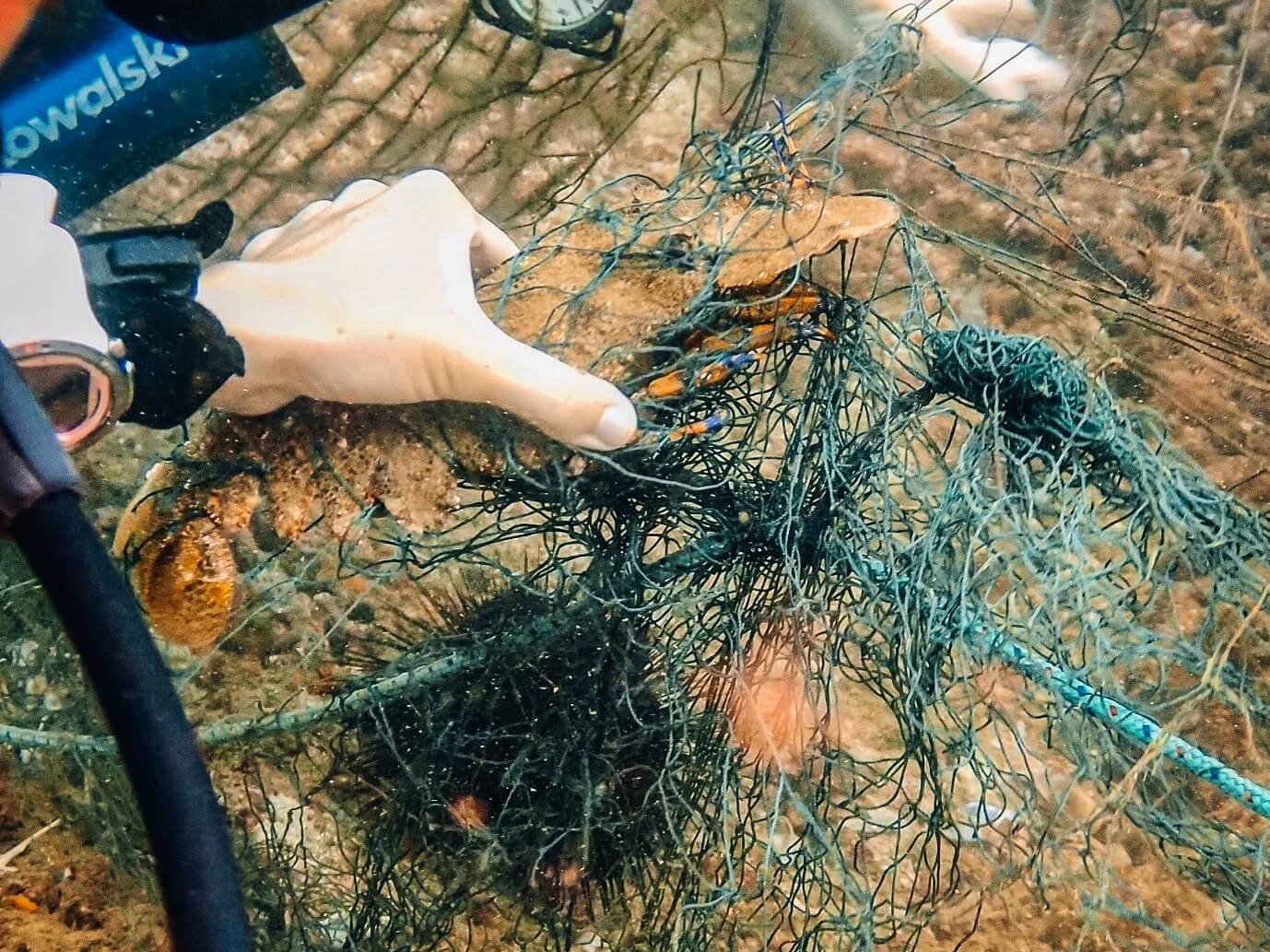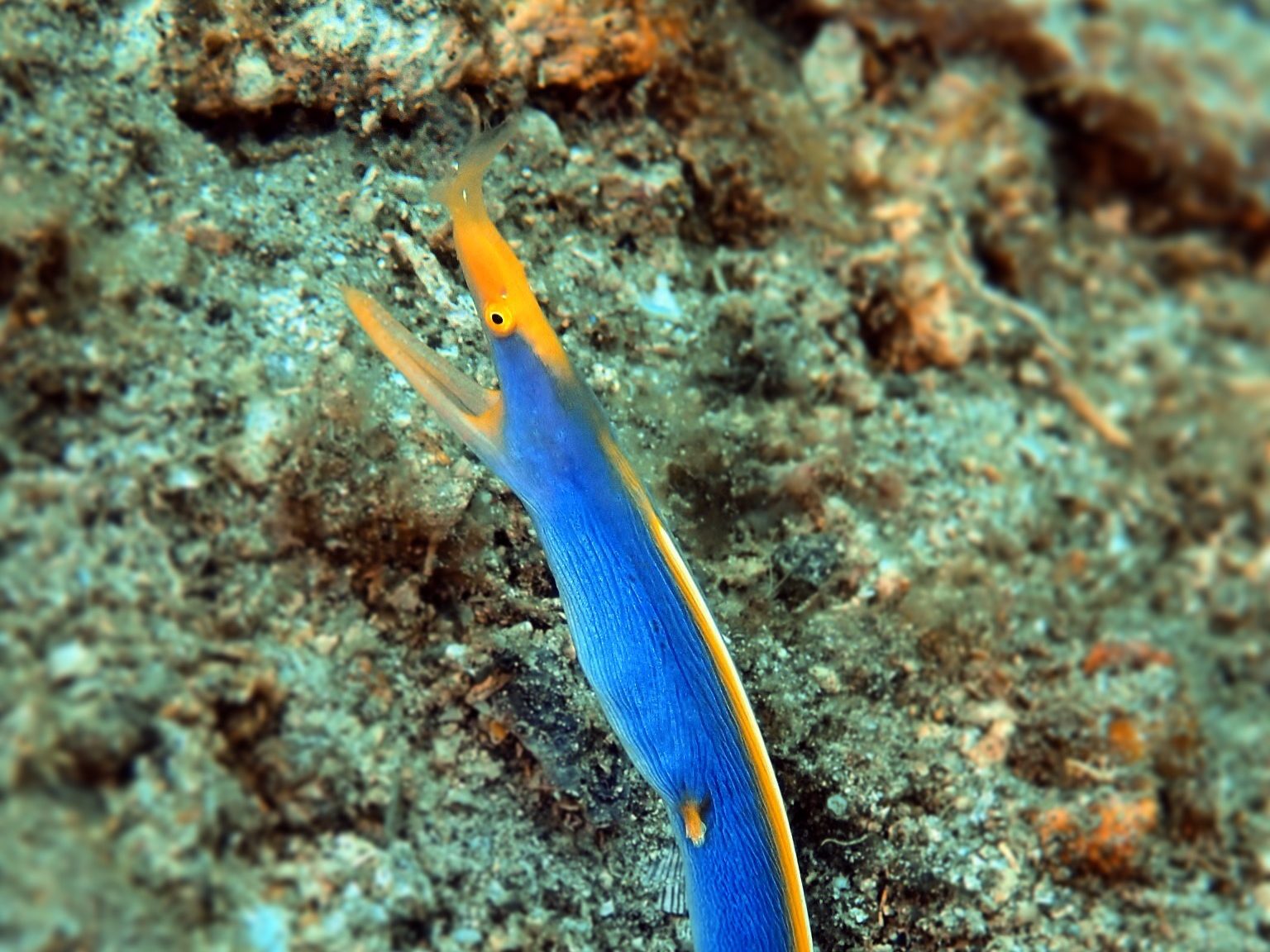
I wrote a dozen different (failed) attempts at a (not-so) humorous intro, tying this little fellow in with a current topic of debate, but they all made me cringe, and so I’ll just cut straight to the chase here. It just so happens that there are many cases of changing sex amongst marine organisms. One of these examples is found in the beautiful and elegant ribbon eel, so named because when free-swimming, it looks like the rippling ribbon of a rhythmic gymnast.
As hypnotizing as they are, it is incredibly rare to see ribbon eels free-swimming. They are usually burrowed down in the sand or rubble, with only their heads protruding, not much larger than a jumbo straw. They become very attached to their hidey-holes, and have been known to stay put for months or even years. Disrupt one though, and it will quickly search out a new abode.
We used to have a juvenile ribbon eel that lived in the rubble of the site of our famous shark dive back in Fiji. It was a terrible place for him to live, because divers from all shops would come and sit on the rubble to watch the sharks. It was the only time we condoned sitting on the bottom. Mr. Ribbons would inevitably find a nice little hole in the rubble to settle into, until enough people found his spot, causing him to move somewhere new. It became a game to find the little black ribbon eel. He never moved very far.
Ribbon eels are unique in that they not only change sex as they mature, but color as well. All of them are born male, and as juvenile males, they are pitch back. As they begin to mature, they develop a yellow dorsal fin.
 |
| A juvenile ribbon eel begins his life completely black. (Rhinomuraena quaesita) |
Then, as they grow into adulthood, they become vibrant blue with the same yellow dorsal fin. Scientists used to think that the different colors were different species of ribbon eel, and have only recently discovered that ribbon eels are in fact sequential protandrous hermaphrodites (sequential hermaphrodites = organisms that switch from one sex to another; protandrous = first male then female). All blue ribbon eels are adult males.
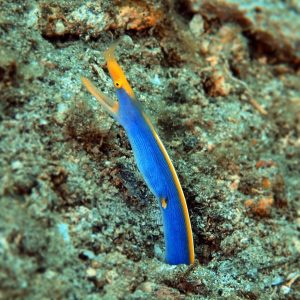 |
| The blue ribbon eels are adult males. (Rhinomuraena quaesita) |
Towards the end of their 20-year lifespan, ribbon eels undergo their final transformation and turn from male to female, and from blue to yellow. The female will then lay her eggs and die within a month. Because of this, it is very rare to see one in yellow form, and we were incredibly lucky to find all three stages of life when diving in Lembeh.
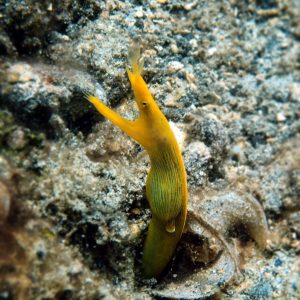 |
| Finally, ribbon eels become yellow females for their last month(s) of life. (Rhinomuraena quaesita) |
As curious and hypnotizing as these critters may be, I must ask you to please not attempt to raise one in an aquarium. A quick Google search shows that you can buy one online for $100. In captivity, they usually stop eating and die within a month though. If you really think they are that cool, let them live out their natural 20 years in the wild.


